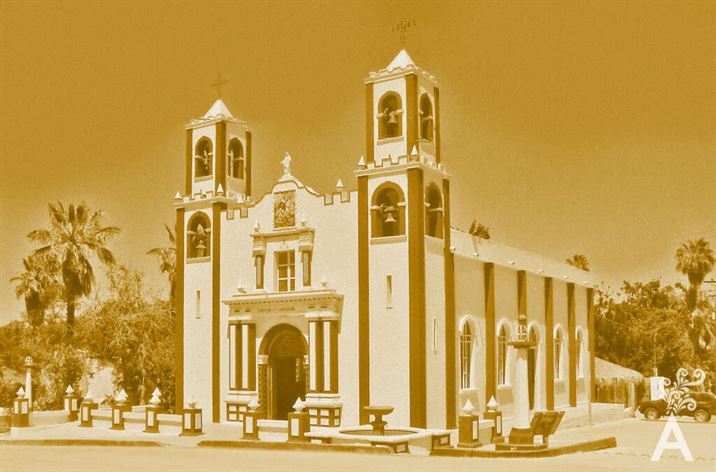The legend of the Bell of Santiago
As a result of the cultural exchange between native Indians and Europeans, Mexico is a country full of traditions. Some traditions were imposed, others adopted. The territory is so extent that a huge range of new customs was generated.
Each region has its own ethnography and popular art identity that includes legends, gastronomy, beliefs, festivities, music, dances and crafts. On this rural tourism is based.
I share here a legend or anecdote that Don Remberto de la Peña, a native of Rancho Mission in Santiago, told me while teaching an eco-tourism and rural tourism workshop.
“There, between the fence and the Palo Verde Ranch, look, it must be there!” my nana told us when we were kauillos (kids in Pericu language). My brothers, cousins and I were about 10 years old and scampering around. Our nana was about 90. We thought she was crazy when she commanded us to dig for a buried treasure. It was a golden bell she assured us was there. Whenever we acted playful she insisted.
[two_first] Sometimes, she turned nostalgic and recounted anecdotes about her family. Other times she told stories of her youthful suitors. Through it all, she reminded us to find the treasure that was buried between the fence and the Palo Verde Ranch where we lived with my parents. She said there was a buried a chest with gold objects, including a bell. She made me promise to look. I loved her so much that I always swore I would.When nana died, we knew that all my cousins and I would be asked to do the same thing, look for the treasure. Time passed. We all grew up and got enveloped in everyday activities, home duties and so.
[/two_first][two_second]

In September 2004, Hurricane Howard and the tropical depression Javier brought heavy rains and caused landslides in Santiago and other parts of the state. It was then a bell was found. Just where my nana said.
Immediately there were rumors in the village of only 752 inhabitants (2010 census-INEGI). Big gossip spreads fast in a small town. Staff from the National Institute of Anthropology and History (INAH) came and took the bell to La Paz, the state capital, to study and restore it.
Someone in the village recalled that in years past, around 1995, foreigners showed up and stayed several days. They brought a map and over beers with locals, searched for a particular place.
Mexicans are hospitable and ended up guiding the foreigners to the area they sought. Days later, the foreigners disappeared in the same mysterious manner as they came, leaving a hole at the site they investigated.
We know now that our family owned the site, but at the time, we did not connect the dots. When the bell appeared, we realized that my nana had told us the truth.
According to history
Jesuit missionaries founded The Santiago Añini in 1724. It was funded by our ancestor, Marquez Villapuente de la Peña, and built on a part of his property. When the Indian rebellion began in San Jose del Cabo in 1733, we do not know if the Añini Santiago missionaries were warned and fled. Or, if they left during the Jesuit expulsion in 1767 when the King of Spain gave them but three days to get out of his realm. Anyway, they fled carrying a chalice and other gold objects of worship, including the aforementioned bell.
Perhaps the missionaries may have decided to bury them thinking the conflicts would be resolved soon and they would return shortly to the mission. Or, maybee they thought it would be best to bury the objects to facilitate their departure. The reason will remain unknown.
What we do know is that the bell was made from an alloy of copper and tin, not gold, and the date of origin was 1767. INAH was asked to return the bell to preserve a part of our heritage. It has been on display in the Santiago church since 2007.
Legends, memories and stories are woven into the fabric of our culture and create an identity for the communities of the peninsula. They are valuable additions to our natural attractions and are a treasure worth experiencing.






